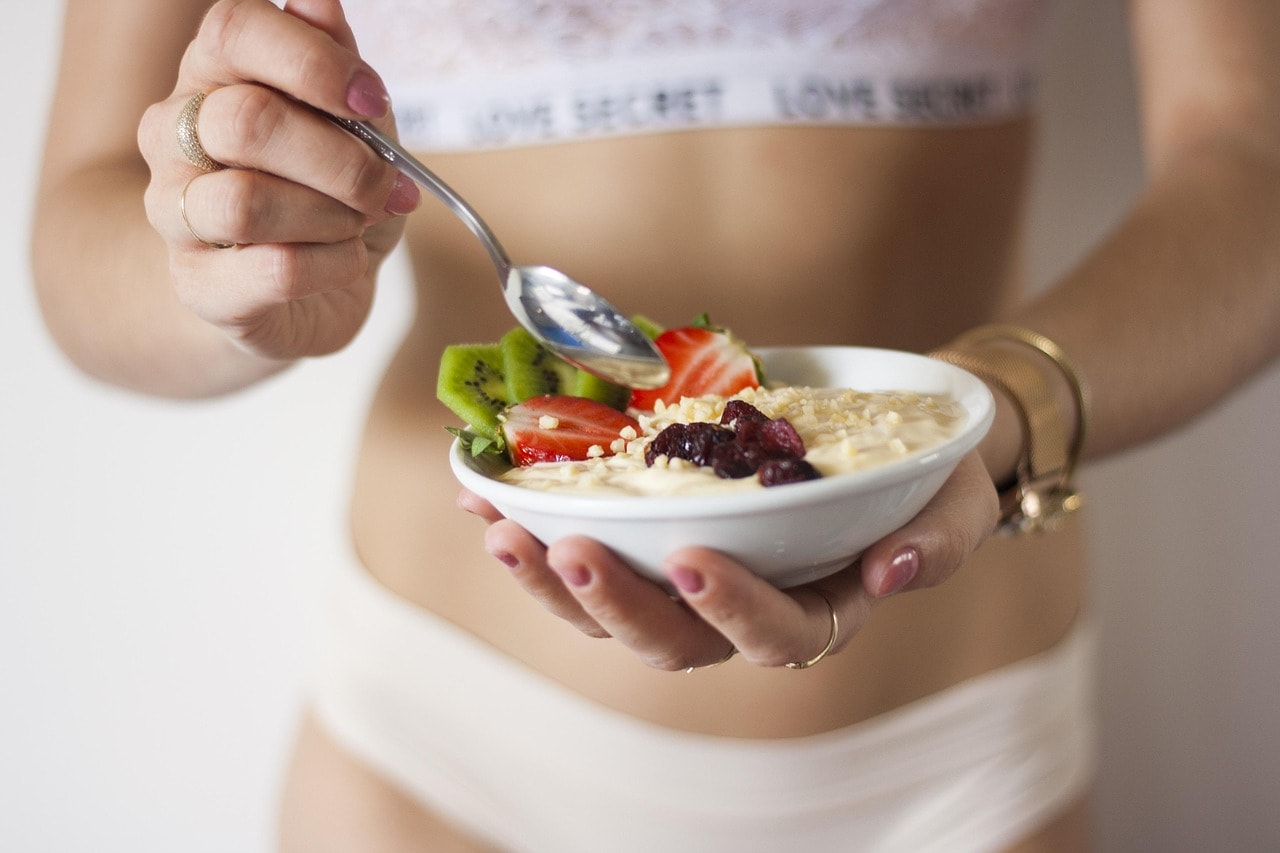The food industry is coming under increasing scrutiny for its environmental impact, from greenhouse gas emissions, to excessive and detrimental land and water usage, to chemical pollution. Given the challenge of feeding a growing world population whilst simultaneously needing to drastically reduce greenhouse gas emissions and other environmental impacts, clearly we need to look at alternatives to “dinner as usual”.
The contribution of livestock to global greenhouse emissions is estimated at between 14.5 – 18%. Fortunately, there are companies who are tackling this challenge head on and looking at how emissions from food production can be reduced. With consumer interest increasing in alternatives to meat and other protein sources, we’ve spoken to the founders of three companies. From the seemingly futuristic to the rediscovery of superfood trees, each company tackles this new drive in consumer interest in different ways.
Solar Foods, Finland
Dr Pasi Vainnika is the CEO and co-founder of Solar Foods. The slogan of the company is “Food out of thin air”. Pasi was formerly in charge of the single largest renewable energy program in Finland. However, when he found out that 20-25% of the emissions come from food, he realized that emissions from this sector needed to be addressed, as well as those in the energy sector. But with the growth in affordable and renewable energy – particularly solar energy– it led him and his team to question the possibility of producing food solely from energy, carbon dioxide, and water. It turns out, the answer is yes.
Solein is a unique single cell protein. It is produced using a fully natural fermentation process like that of the production of yeast or lactic acid bacteria. The powder, which is produced from the process, is 50% protein, 5-10% fat and 20-25% carbohydrate. Most likely, the first product to reach the consumer market will be a replacement in existing plant-based foods. For example, using Solein in shakes or as an alternative to dairy in milks, yogurts, and even in breads and pasta. In the future, a lasagna could include the protein in all aspects of the recipe: the sauce, in the pasta sheets, and in the filling. Further into the future, there is also the possibility that it could be used as the basis for cultured meat production.
 In the Photo: Solein Can be used in smoothies as a protein alternative. Photo Credit: Shawn Fields – Unsplash
In the Photo: Solein Can be used in smoothies as a protein alternative. Photo Credit: Shawn Fields – Unsplash
To produce a kilo of the protein powder takes 10 liters of water in comparison to the 2500 liters of water for a kilo of soy or 15,500 liters for a kilo of beef. Electricity is the main raw material, and the plan is to source this from renewable energy sources. Additionally, Solein binds carbon dioxide rather than emitting it, easing pressure on land use.
The product is currently going through regulatory checks and testing at the moment, with a plan to launch in 2021. NASA and the Soviet Union space programs had started to investigate in similar protein production for their expeditions in the past, but Solar Foods has brought it down to earth.
Higher Steaks, United Kingdom
Whilst some people are switching to plant-based diets and others have reduced their meat consumption, some others still want to keep meat in their diets but are looking for more environmentally friendly options. This is where lab-based meat comes in.
Benjamina Bollag, CEO and co-founder of Higher Steaks, a UK-based company, believes that it is important to provide alternatives to meat with a lower carbon footprint, but that taste as close as possible to the real thing. She believes that the change required in human behavior to cut emissions will not happen fast enough otherwise. This approach is confirmed by research they have conducted. 52% of respondents confirmed that they would switch from conventional meat to the Higher Steaks alternative, with 21% saying they would prefer a plant-based diet.
There are different ways of producing lab-based meat. The process that Higher Steaks is developing is based on pluripotent stem cells, which are taken from a small skin patch or blood sample. The meat that is grown is then shaped into products. Currently, Higher Steaks is working primarily on pork products.
 In Photo: Higher Steaks will eventually release pork as its first lab-cultured meat. Photo Credit: Yvonne Lee Harijanto – Unsplash
In Photo: Higher Steaks will eventually release pork as its first lab-cultured meat. Photo Credit: Yvonne Lee Harijanto – Unsplash
The company has yet to conduct a lifecycle assessment of the lab-grown meat, but given the high levels of environmental impact from meat production, it should be safe to say that Higher Steaks products will be more sustainable. In addition, as Benjamina explains, other advantages include the avoidance of antibiotic use, resulting in a product which is better for the consumer as well. The level of fat can also be adjusted, depending on consumer preference. The company is working to have the first products in shops within 3-5 years.
Barukas, Brazil
Barukas proves that you don’t always to have to look to the future for more sustainable food sources. Sometimes it is about rediscovering and making available a food source which has been around for a long time to a wider audience.
The baruzeiro tree, native to Brazil, has been a long-time source of nutrition for people living in the Cerrado, the vast savannah at the heart of Brazil. The tree produces a fruit, which contains the baru nut. It was the nutritional profile of the baru nut that initially attracted Seth Tuckerman, who had formerly been the COO of Beachbody, a fitness business. The nuts are high in protein, fiber, minerals, and are lower in fat than typical nuts. The taste is often described as a cross between peanuts and almonds. In fact, Tuckerman’s immediate thought on tasting them was “low calorie almonds”. Tuckerman’s passion is not only about the positive health benefits, but also about the trees and the mutual benefits for the communities where they grew.
 In Photo: Baruzeiro tree. Photo Credit: Barukas
In Photo: Baruzeiro tree. Photo Credit: Barukas
Tuckerman became a co-founder of Barukas Incorporated. They are on a mission to plant 20 million baruzeiro trees – as a start. The trees need little water and – as native trees – they are already ideally suited to the Cerrado conditions. First, Barukas must prove that there is a market for the fruit of the existing trees. As such, the company is encouraging those living in the Cerrado to collect the nuts by guaranteeing to buy them, then creating customer demand for the nuts. Collecting the fruit from existing trees helps to preserve them from being cleared for intensive and invasive agricultural methods such as soy plantations. Likewise, planting new trees helps to reverse the deforestation of Cerrado. A report by the Climate Observatory estimated that the destruction of surface vegetation in the Cerrado released 248 million tons of greenhouse gas emissions in 2016. This is roughly two-and-half times the annual tailpipe emissions from all cars in Brazil.
 In Photo: Closer look at the baruzeiro tree. Photo Credit: Barukas.
In Photo: Closer look at the baruzeiro tree. Photo Credit: Barukas.
From talking with these three pioneers, it is now clearer than ever that we need multiple solutions to address how to sustainably feed a growing population. We need to cut the carbon emissions and reduce other environmental impacts such as water and land use associated with food production. Some of these solutions are a little way off in the future, but others are available now. We are what we eat, but our choices will increasingly determine what kind of future we will live in as well.
EDITOR’S NOTE: The opinions expressed here by Impakter.com columnists are their own, not those of Impakter.com.
Related Articles:
“Seamore: Could Seaweed Become a Common Source of Sustainable Food?” by Rosa Munson-Blatt
“2019: The Time for a Vital Food Choice Lesson” by Naume Guveya-Writer
“Sustainable Fisheries: Tackling Malnutrition and Deficiencies in One Go” by Nauma Guveya-Writer











